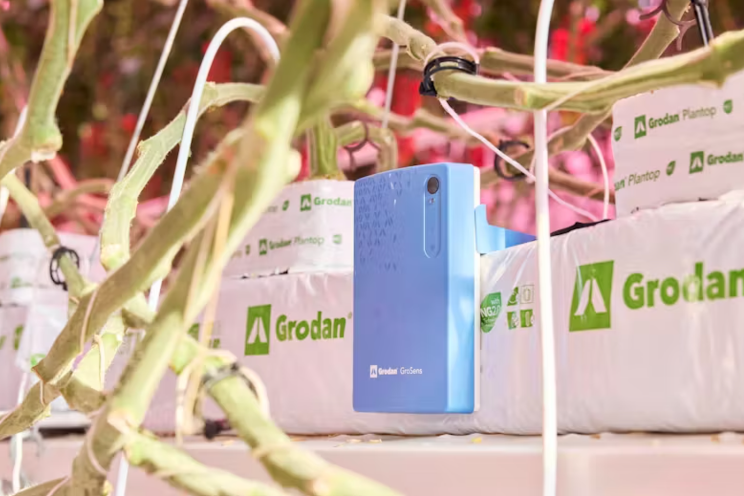Another growing season for Grodan and Signify
Added on 03 October 2024

The aim of the trial is to further improve energy efficiency through spectral dimming of the full LED installation, using innovative climate screens and energy recovery from an active dehumidification system. Additionally, the trial will test new adapted fertigation and irrigation management strategies.
Through the end of April, a holistic approach will be utilised to achieve optimal energy efficiency and plant performance while maintaining high light use efficiency, excellent taste, and optimal fruit weight. This marks an exciting prolongation between two industry leaders dedicated to advancing sustainable horticulture practices.
“When growers started using LEDs to grow tomatoes, we could explain how steering light and heat separately had huge benefits. When growing with full LED, another factor comes into play; steering your humidity to better manage the crop balance,” indicates Marcel Raats, plant specialist for Philips LED grow lights. “With a holistic approach to growing; meaning separately managing light, heat, evaporation, fertigation, irrigation, and measuring and monitoring each factor, you will get the best insights in how the crop performs over time,” he adds. “Last year we used 50% less heat input compared to commercial reference growers. This highlighted the potential of active dehumidification combined with full LED lighting in climate control. As we move into the second year, we are focused on fine-tuning our approach to strike the balance between optimal crop production and more energy efficient methods.”
Taking the learnings from 2023 and 2024, the trial aims to demonstrate to growers how energy efficient strategies can lead to additional improvements in plant and fruit performance:
This year’s trial will focus on:
- The use of spectral dimming – to improve electrical efficiency of the LED installation. The strategy this year will be to target specific Daily Light Integral (DLI) whilst switching off the least efficient LED colours
- The use of advanced climate screens – to offer greater thermal insulation of the greenhouse with a higher potential for heat-recovery through the dehumidification system.
- Gaining insights into the vertical plant temperature – to help create better crop balance and steerability in the development speed of both the young fruits in the head of the plant, all the way to the maturing fruits in the lower part of the canopy.
- Managing water and nutrient uptake – to target the lowest possible electrical conductivity (EC) while maintaining the highest production and fruit quality and simultaneously steer crop-balance with the right nutrient composition.
More news
















